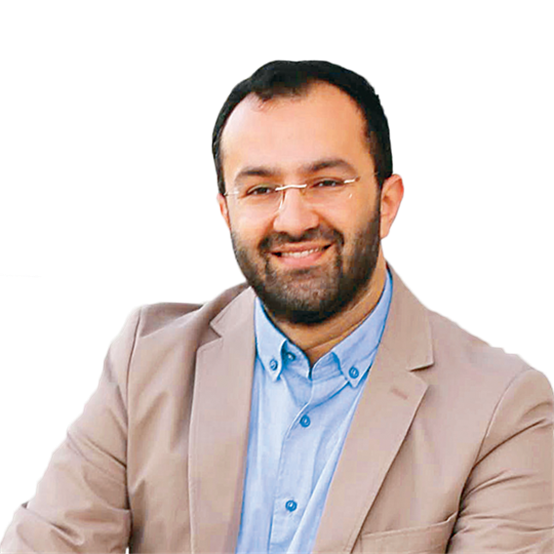
- 24.04.2025, Thursday
- 04:43
Yemen's missing children...
21:4829/11/2023, Wednesday
Next article
Taha Kılınç
Taha Kılınç was born in 1980 in Turkey’s southern Mersin. He graduated from Istanbul University’s faculty of theology. Kılınç worked for the Sabah newspaper between the years 2011 and 2016. The Middle East and the Islamic world are both Kilinc's specialties and where he feels most at peace. He has 16 published books, and is married with three children.

After the birth of Christ, the Roman Empire, attempting to establish dominance in the land of Palestine, engaged in a fierce struggle with the Jews. In the year 70, the renowned Roman commander Titus laid siege to Jerusalem, but the conflict did not subside. Militant Jewish groups scattered throughout Palestine continued their attacks and sabotage against the Roman rulers. In this chaotic environment, the only option for the civilian Jewish population was to migrate to different regions, leading
After the birth of Christ, the Roman Empire, attempting to establish dominance in the land of Palestine, engaged in a fierce struggle with the Jews. In the year 70, the renowned Roman commander Titus laid siege to Jerusalem, but the conflict did not subside. Militant Jewish groups scattered throughout Palestine continued their attacks and sabotage against the Roman rulers. In this chaotic environment, the only option for the civilian Jewish population was to migrate to different regions, leading to significant Jewish movement from the Asian highlands to the interior of Arabia. In this context, thousands of Jews also headed to Yemen.
The primary reason for choosing Yemen was the fact that it was the homeland of the famous Queen of Sheba (known as Belkis in Islamic literature), a figure well-known to all. The second reason was the economic potential in Yemen, which was a lucrative stop on the spice trade route.
Centuries later, Yemen witnessed the migration of two separate religious groups from the Bilad al-Sham region: the Ibadi and Zaidi. A faction that separated from the Kharijites, who had martyred Ali, established its own rule in the Hadramawt region of Yemen around 745, adopting the teachings of Abdullah bin Ibad al-Tamimi. The Zaidis, loyal to Zaid bin Ali, the grandson of Hussein, were the closest and moderate Shia sect to the Sunni community because they considered the caliphate of Abu Bakr and Umar legitimate. When they sought refuge in Yemen to escape the turmoil and chaos in the center, the 9th century was beginning.
Thus, Jews, Zaidis, and Ibadis with different doctrinal and historical backgrounds started living side by side in the lands of Yemen and present-day Oman.
The Jews of Yemen had already captured the attention of Western researchers and anthropologists from the early 1800s. The works, especially those of the German Jewish explorer and photographer Hermann Burchardt, who was killed during a journey in the interior of Yemen in 1909, provided crucial information about the history, culture, and position of Jews in Yemen. Since the early 1880s, Yemeni Jews had begun emigrating to Palestine in small groups, attracting the attention of Zionists shortly thereafter. After the establishment of Israel, a horrifying scandal involving Yemeni Jews would come to light.
From the summer of 1949 to the autumn of 1950, nearly 50,000 Yemeni Jews were transported from Aden to Israel by British and American planes. During the process, more than 350 flights were conducted, bringing Jews from Djibouti, Somalia, and Eritrea as well. Approximately 800 Jews died during the journey, and thousands more lost their lives due to epidemic diseases and neglect in the camps where they were housed both in Aden and after arriving in Israel. The real scandal was the disappearance of Yemeni Jewish babies, with some sources claiming up to 5,000. Babies were forcibly separated from their mothers immediately after birth, and later, they were told that their children had died without any further information. Many mothers learned about the "death" of their children through mass announcements on camp speakers, causing a great shock. Subsequently, it was revealed that some of the "dead" children were given up for adoption to childless Jewish couples who had survived the Holocaust, marking the climax of the scandal.
The "missing Yemeni children" file remains a matter of serious debate in Israel today. The official reports of various commissions established at different times ended with vague conclusions such as "There was not as widespread negligence as exaggerated, maybe some minor things might have happened." However, the questions in the minds and hearts of the Jewish people, who were torn from Yemen and dragged to the occupied Palestinian territories, did not disappear.
The Israeli project, designed as an occupation colony and advanced outpost of Western imperialism, not only inflicted suffering on the local Muslim and Arab population of Palestine but also subjected its own Jewish population to various tragedies and dramas from different perspectives. When this bloody parenthesis is closed one day, all the evidence that Israel committed a grave crime against humanity will be laid bare for everyone to see.
#Yemen
#Missing Children
#Jews
#Israel
#Palestine
Comments
Hello, the comments you share on our site are a valuable resource for other users. Please respect other users and different opinions. Do not use rude, offensive, derogatory, or discriminatory language.
No comments yet
The floor is all yours.

Click here to receive the most important news of the day by email. Subscribe here.
By subscribing, you agree to receive electronic communications from Albayrak Media Group websites and accept the Terms of Use and Privacy Policy.
LEGAL NOTICE
The BIST name and logo are protected under the "Protected Trademark Certificate" and cannot be used, quoted, or altered without permission.All rights to the information disclosed under the BIST name are entirely owned by BIST and cannot be republished. Market data is provided by iDealdata Financial Technologies Inc. BIST stock data is delayed by 15 minutes.






